By Robert Waite
Tromsø, Norway –
It began with a poster. It was a pre-COVID summer. We were overnighting in Tromsø, Norway, a coastal city of about 52,000 inhabitants located 200 miles north of the Arctic Circle.
“Tromsø International Film Festival. Frozen Land. Moving Pictures,” it read. The dates were in mid-January.
My partner was instantly interested, but I was less sure. While I have an abiding interest in cinema and write frequently on travel, often to remote locations, Norway? In the dead of winter? To watch films?
But the more I thought about it, the more enticing the prospect became. For one thing, film festivals attract a huge number of visitors. After a rather small beginning in Mussolini-era Venice in 1932, festivals have since sprung up virtually everywhere on the planet. By latest post-pandemic count there are about 12,000.
The Toronto Film Festival, the largest, annually attracts 400,000 film buffs, industry mucky-mucks, and red-carpet walkers. Sundance, while smaller in terms of in-person attendance, has grown to the point that it is looking to abandon its traditional Park City, Utah, locale for bigger (if not whiter) pastures.
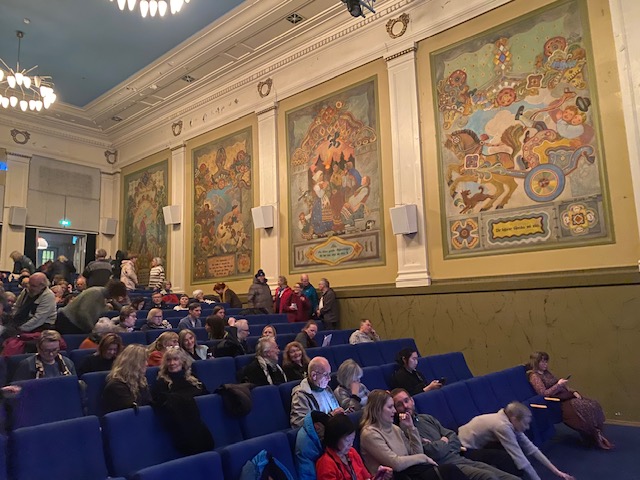
Verdensteatret is one of Europe’s oldest film theaters still in operation. It’s a vibrant film culture center in Tromsø, with daily screenings and a lovely and popular bar. The wall murals depict traditional Nordic tales. Photo by Robert Waite.
“TIFF” Trifecta
Added to this, I had already covered both the Toronto and Tirana (Albania) Film Festivals for Huffington Post. Adding Tromsø would create a kind of hat-trick, a veritable TIFF Trifecta.
So, as a Christmas present, I bestowed a trip to the Tromsø International Film Festival on my long-suffering spouse. The only caveat was that she had to take me along.
Film Festivals can vary widely in format. Some, like Cannes, are invitation only. Others, like Berlin, are more industry focused. Tromsø, like Toronto, is more public-friendly.
Traveling to Tromsø from North America can be a bit of a hike. We broke up our journey with an overnight in Oslo before flying into Tromsø in time for the opening night film and reception. It is possible, however, to fly direct to Tromsø from Frankfurt, Paris, London, or Copenhagen.
However you get there, you will find Tromsø charming and its screening venues unique. The Verdensteatret Cinematheque is one of Europe’s oldest (1916) movie houses in continuous use. It features decorative murals as well as a lively café.
Not far away is the Aurora Fokus theater complex – six screens and what must be the largest concession area on earth. Perched on a hill above the city center is perhaps the most unique venue – an empty indoor Olympic-size swimming pool reconfigured with seats.
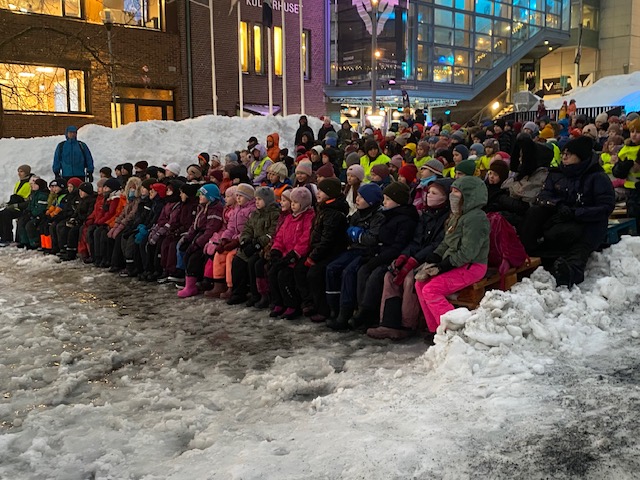
Tromsø primary students enjoy early morning animated films in an outdoor theater before heading off to school. Photo by Robert Waite.
The Great Outdoors
There is also the festival’s signature screening spot – an outdoor theater. As the sun does not rise from November 21 to January 21, there is no pesky light to spoil your viewing. We took in the Oscar-nominated animated film “Flow” on the final day during a snowstorm. Much of that movie is set in a jungle, so the snowflakes swirling around us made for a surreal experience.
Early every morning the outdoor venue fills up with local school children who get to watch age-appropriate animated films, are invited to down a traditional hot local grog of some sort and then march off to class. A film culture in the making – and a cute photo for tourists.
The key to a film festival is planning and pace. My spouse employs an Excel spreadsheet to keep track of the films – important as there were more than 200 showings. It is possible to see as many as four films in a day. We did this once and vowed (as we have previously) to never do so again.
The great thing about festivals with a regional touch, like Tromsø and Tirana, is that they mix bigger box office fare with work produced closer to home. So while you could see films like “The Brutalist” and “No Direction Home,” in Tromsø, there were gems like “Touch” from Iceland, Germany’s “The Assessment,” and Norway’s “Everything Must Go.”
Plus, if you are into sing-alongs, they had a special showing of “Stop Making Sense,” Director Jonathan Demme’s classic Talking Heads film.
Bouncing Back from COVID
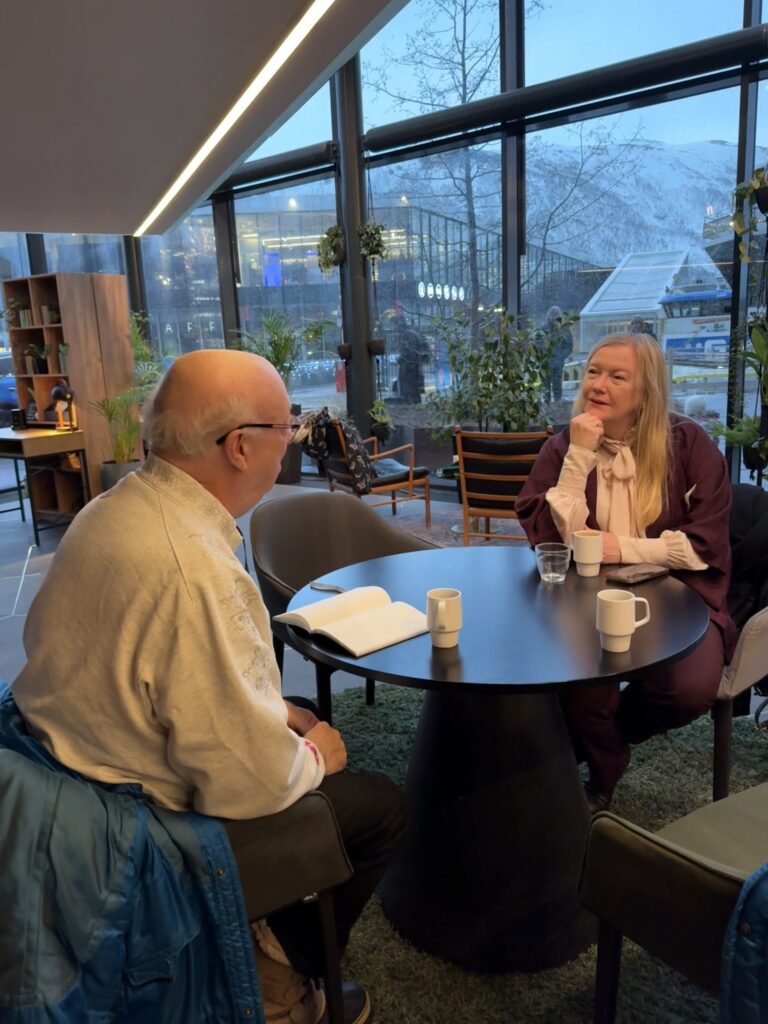
The author and Festival Director Lisa Hoen, who shared her vision of the future of film festivals. Photo by Karen Shigeishi-Waite.
I had a chance to sit down with Festival Director Lisa Hoen one morning to get her take on Festivals post-COVID and in an era of streaming and other headwinds facing the industry. She was remarkably sanguine — and remarkably calm, given that the festival was in full flight.
“The pandemic was a challenge,” she admitted. “At one point we opened up a drive-in cinema on top of a shopping center,” she added with a laugh. “But this year I am confident we will be back to pre-COVID numbers, more than 60,000 admissions.”
When asked about Generation Z or “iGen,” who are purportedly abandoning cinemas for their phones and couches, Ms. Hoen said she did not see that. “I think young people want to connect. We reach out to students at the university and get good response. We offer discounts and select films that we think will appeal. Festivals in my opinion will not die, they will evolve.”
According to Ms. Hoen, another reason to come to the Tromsø’s Festival is that it typically coincides with a special January 21 holiday marking the return of the sun. “You can try one of our delicious “sun buns,” she said with wink.
The other thing the Tromsø Festival normally aligns with is an opportunity to view the Northern Lights, as you have a 33 percent chance on any given day to see them in winter. Alas, we had a zero percent chance due to persistent clouds.
Who Needs Sunshine?
But what we did view were some great films, in a hospitable, diverse (there are 140 different nationalities living there), and vibrant town. If you like film and you like travel, Tromsø makes for a great destination.
Full Disclosure: As an accredited member of the media I received free access to films, including special press screenings. I also consumed copious complementary Mack beers at receptions and numerous cups of coffee at the Industry and Media lounges. All other expenses – air, accommodation, meals – were borne by me.
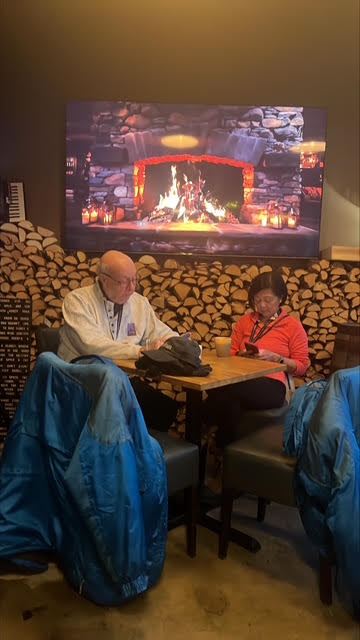
The author and his partner are hard at work in the Industry and Media Lounge, which features a fake fireplace surrounded by real Norwegian wood, as memorialized by the Beatles. Photo by Peter Goldman.
IF YOU GO
Film Festival Information – https://www.tiff.no/en/ Your best bet is to purchase tickets in packets at a discounted price.
Getting There: We flew Air Canada and Lufthansa to Oslo and Norwegian Air to Tromsø. Lufthansa also offers direct flights from Frankfurt. SAS, British Airways, Swiss Air, and Finn Air all offer connecting service to Tromsø.
Where to Stay: We stayed at Bispegata 5 – Studio Apartment Hotel, reserving through Booking.com. Although not spacious, it had everything two people would need, was remarkably close to the town center, and was affordable. Affordable is important – Norway is expensive. If hotels are what you prefer, there is a genuinely nice Raddison Blu property near the center as well as Clarion Hotel The Edge (no relation to the lead guitarist for U2). These will run you about $400 per night.
Where to Eat: There is no shortage of great dining spots. If you want Michelin-level establishments, a restaurant called Smak is excellent, as is Hildr, located in a historic home. Both offer dishes featuring locally sourced ingredients. Bardus Bistro has traditional Norwegian dishes (including reindeer, which we quite like). The Aurora Café and Bar is handy to the Aurora Cinema complex. The real star of the Tromsø culinary scene is seafood. In winter, the cod is especially good, as the females are extra fatty as they approach spawning season. Fiskekompaniet is quite popular.
Currency: Norway does not use the EURO – their currency is the krone. Today one U.S. dollar is worth 11.2 krone.
VISAS: None needed for U.S., Canadian, and EU citizens.
About the Author
Robert Waite has been writing on travel for more than 50 years. A four-time winner
of the New England Newspaper and Press Association’s Best Column Award, Robert is
also the author of Ipswich on My Mind and Ipswich Out of My Mind, a compilation of
humorous reminiscences about growing up in Massachusetts. The books are
available from Amazon as paperbacks or as a Kindle E-book. He and his wife reside in
Ottawa, Canada.




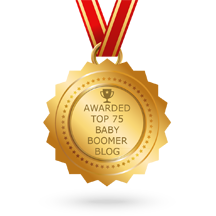

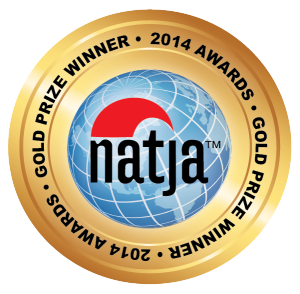

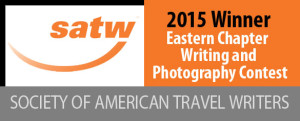
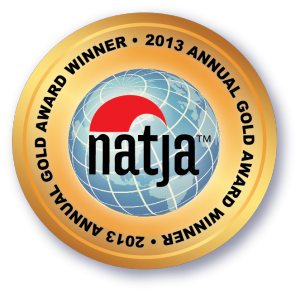


2 Responses to Tromsø: Top of the World Film Fest